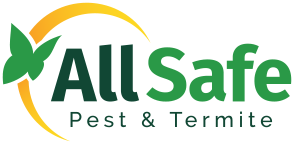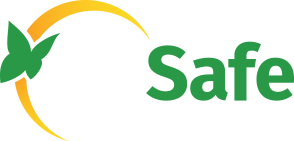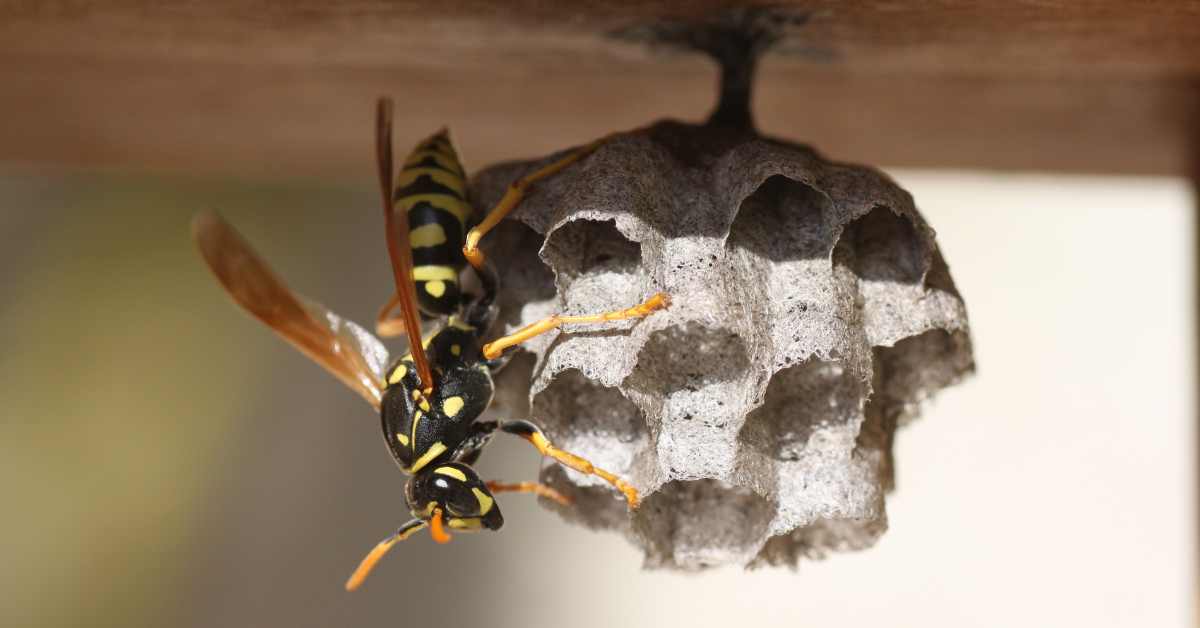As summer winds down in Texas, it’s not uncommon for wasps to become more aggressive than usual. Homeowners often report an uptick in wasp activity near doors, patios, and roof eaves during this time of year, but why does this happen, and what can you do to protect your home?
Don’t wait for a sting. Schedule professional wasp control now! Learn more about our wasp control services.
What Makes Wasps More Aggressive in Late Summer?
The key reason wasps become more aggressive in late summer is simple: survival. Unlike spring and early summer, when they’re busy building nests and raising their young, late summer brings a shift in behavior. Their colony’s queen has stopped laying eggs, and the workers have fewer responsibilities, so they become more territorial and focused on food sources. Other contributing factors include:
- Scarcity of food: Natural food sources dwindle, driving wasps to scavenge near human activity.
- Colony protection: Nests are at their peak size, making wasps more protective.
- Change in sugar needs: Adult wasps switch from protein to sugar, causing them to seek out sugary drinks and ripe fruits.
This behavioral shift means you may see more wasps hovering near your outdoor gatherings, trash cans, or even your entryways.
Common Areas Where Wasps Lurk
Wasps tend to build their nests and search for food in areas that offer shelter and easy access to sugary or protein-rich items. Around your home, keep a close eye on:
- Under roof eaves
- Inside attics or crawlspaces
- Behind shutters or wall voids
- Under patio furniture or grills
- Around trash bins or compost piles
- Near flowering plants or fruit trees
These spots are ideal for nesting and feeding, and they’re often close to the spaces you and your family use most in summer.
How to Defend Your Home From Late-Summer Wasp Activity
The best way to deal with wasps in late summer is to prevent them from settling in or getting too comfortable around your home. Below are practical steps every homeowner can take to reduce wasp activity and avoid dangerous stings.
1. Seal Entry Points
Start by inspecting the exterior of your home for any gaps, cracks, or holes that could serve as entry points for wasps. These pests can squeeze through small openings, especially around window frames, doorways, vents, and siding. Use caulk, weatherstripping, or expandable foam to seal up problem areas. Ensure attic vents and soffits are properly screened to prevent wasps from sneaking into wall voids or ceiling spaces.
2. Limit Outdoor Food Sources
Wasps are attracted to anything sweet or protein-rich, especially as they search for easy meals in late summer. If you're dining outside or hosting a backyard cookout, clean up spills immediately and keep food covered. Trash cans should be tightly sealed, and recyclables should be rinsed thoroughly to remove sugary residue. The less accessible the food is, the less likely wasps are to linger around your patio or deck.
3. Remove Nesting Sites
Keeping your property tidy can go a long way in deterring wasps from setting up nests. Check under eaves, around sheds, and in corners of outdoor furniture for early signs of nests. If you catch them early, while the nests are still small, they’re much easier to remove. Also, trim back bushes, trees, and shrubs touching your home’s exterior, as these can provide protected spots for wasps to build. Store unused furniture, grills, and tools inside when not in use to reduce available shelter.
4. Use Wasp-Repellent Plants or Sprays
Certain plants are known to help deter wasps, including mint, citronella, eucalyptus, and wormwood. Strategically planting these around high-traffic outdoor areas like patios or garden seating zones can help create a less appealing environment for these pests. In addition, natural or non-toxic wasp deterrent sprays can be used around eaves, doors, and play areas to discourage nesting or lingering activity. Just be sure any product you use is labeled for safe use around children and pets.
5. Call in the Experts
While some homeowners may try to handle small nests on their own, late summer is the time when wasps are at their most aggressive, and that makes DIY nest removal risky. A licensed pest control professional has the tools and training to safely locate, treat, and remove wasp nests without risking your household. Experts can also assess your home for conducive conditions and help prevent future infestations before they start.
Wasps can quickly turn your favorite outdoor spots into no-go zones. Following these steps and staying proactive can help reduce their presence and keep your family safer as summer winds down. If the problem persists or you're unsure where to start, professional help is just a call or click away.
Get Help From All-Safe Pest & Termite Today
Don’t let late-summer wasps take over your home’s outdoor spaces. Whether they’re nesting around your eaves or swarming your patio, All-Safe Pest & Termite is here to help with targeted solutions and expert care.
Reach out through our online contact form or call (972) 945-9226 today to schedule an inspection and take the sting out of summer.



